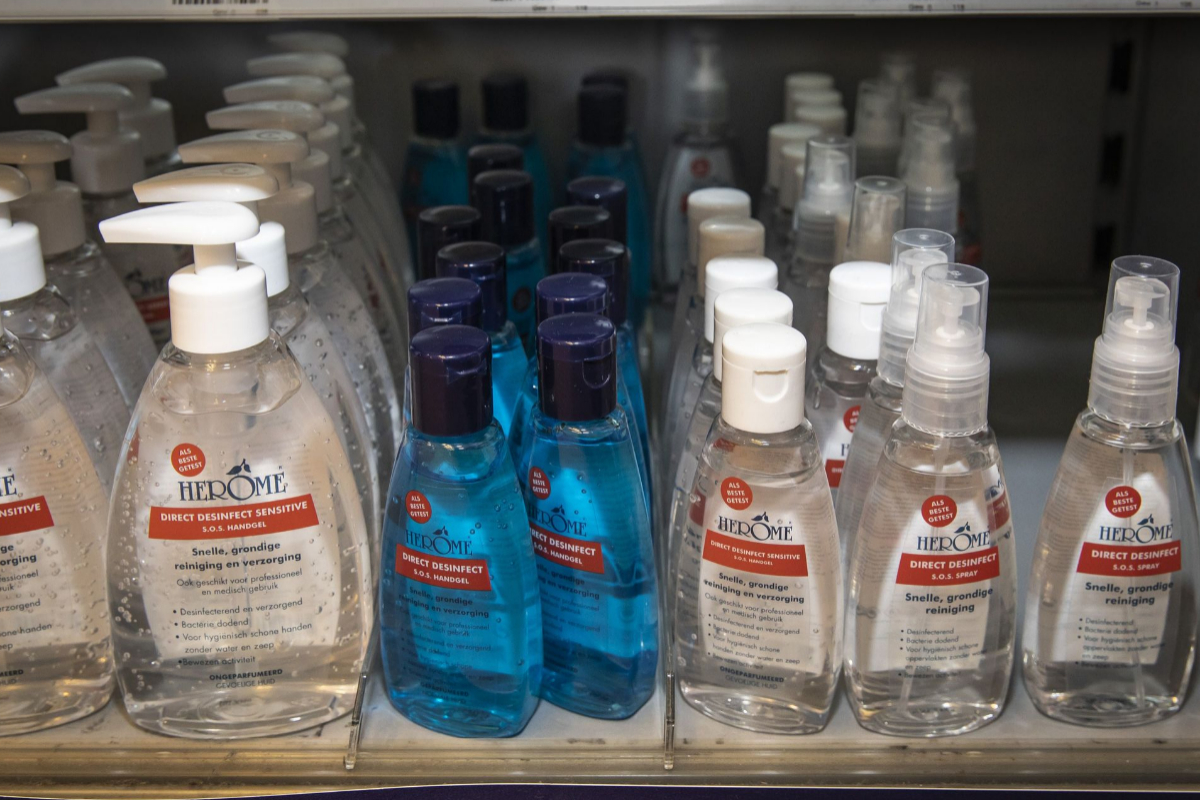- Collective madness for the masks. "But do you think a trap can stop a coronavirus of those?"
- Mumps, measles and rubella.The strange resurrection of zombie diseases
- File Read all the recommendations of Boticaria García
Due to the panic unleashed by the coronavirus, media Spain has decided to storm pharmacies in search of its two new holy grails. First the masks were exhausted and this week the turn of the hydroalcoholic gels has arrived. In February, the sale of disinfectants has increased more than 700% compared to last year in Spain. In Italy its price has been multiplied by seven. Everyone wants their little bottle in the bag or in the office drawer! But are they better than traditional soap water? When and how to use them? Do they cause adverse reactions? We solve seven frequent questions about hydroalcoholic gels:
What is a hydroalcoholic gel?
A hydroalcoholic gel, alcohol-gel or bactericidal cleansing gel, is an antiseptic product that is used as an alternative to soap and water for hand washing . Its main assets are ethyl and isopropyl alcohol (between 60% and 95%) although it can also be formulated based on benzalkonium chloride or chlorhexidine. Alcohol can be aggressive and, therefore, excipients such as panthenol, propylene glycol or glycerin are added. There are premium hydroalcoholic gels, enriched with pink pepper or floral notes, more typical of a perfume than of a disinfectant, such as jasmine, vetiver, rose or bergamot.
Is it better to wash your hands or use a hydroalcoholic gel?
The first thing is to ask: do I have clean or dirty hands? If they are dirty, for example, by blood or body fluids, washing with soap and water is recommended. In addition, according to the Centers for Disease Control and Prevention in the United States, soap and water are more effective than hand sanitizers to eliminate some microbes , such as Cryptosporidium, norovirus and Clostridium difficile. Handwashing is the most accessible and economical method for all with the luck that, in addition, it has proven to be effective.
If the hands are not dirty, it is useful to use a hydroalcoholic gel. In just one minute it can be effective against a broad spectrum of bugs: Gram-positive and Gram-negative bacteria including mycobacteria and fungi. This is the reason why these gels are useful in the hospital environment , more aseptic, where the hands come into contact with microorganisms without presenting excessive dirt. In addition to the hands being dirty or greasy, there are other limitations to the effectiveness of the gels: that people do not use enough of the product or remove it before it has dried.
How does it apply?
First of all it is important to apply it with dry hands because water reduces effectiveness. The appropriate volume is between two and three milliliters (the application of a common dispenser). It should be distributed over the entire surface of the hand emphasizing the interdigital spaces and then it takes 15-20 seconds for drying. The time that must elapse to reapply the gel depends on each manufacturer, but in general it is not recommended to reapply until after six hours . Important! Faced with rumors, the UN has had to deny that spraying the body alcohol or chlorine protects against the coronavirus.
What happens if you go over?
Due to alcohol, people with sensitive skin may experience irritation, itching, dry skin and even swelling . To avoid this, it is advisable to include moisturizers in the formula, which do not inhibit the action of alcohol or oils to increase hydration and replace skin lipids.
Can they be used in young children?
They can be used after two years with caution to avoid ingestion. Although more research is necessary, a study conducted in Almeria showed that the use of these gels in children aged 0 to 3 years in hand hygiene could reduce the incidence of respiratory infections, the use of antibiotics and school absenteeism.
However, the main problem with the application of these gels (which sometimes have flashy packaging) is the possible accidental ingestion of the product by children. The most frequent symptoms are irritation in the mouth and eyes and vomiting, but if the volume ingested is large the child may breathe poorly and have difficulty staying awake. In case of accidental ingestion, the Spanish Association of Pediatrics recommends keeping calm, not causing vomiting, washing the area if the contact has been external, keeping the product responsible for being able to identify it and consulting by telephone with the National Institute of Toxicology, the 112 or the health center.
Can I make a homemade hydroalcoholic gel?
The experiments, with soda. In 2009, as a result of an epidemic of influenza A, the hydroalcoholic gel was depleted in Buenos Aires. Following this event, the tutorials (some even from television) proliferated, encouraging them to make it homemade using ethyl alcohol, carbopol, glycerin and treitanolamine. In no case is it advisable to play Chymicefa with hydroalcoholic gels. Before it is preferable to resort to the classic handwash with soap and water.
Is this the first time this type of gels have been depleted in Spain?
We may only remember pharmacists, but in 2009 we experienced a similar collective hysteria due to the pandemic of influenza A (H1N1). At that time the apothecaries filled the stores with these disinfectants because it seemed that the world was coming to an end. But no, in the end of most pharmacies we ate the stock of gels because life took its course. So far, of course.
According to the criteria of The Trust Project
Know more- Coronavirus
- Covid 19
- Science and Health
HealthLast news about the coronavirus: WHO warns for the first time about "an eventual pandemic"
HealthCoronavirus in Spain: Quarantine in police custody at the hotel in Tenerife where the infected Italian was staying
SaludPekín, a city beset by fear of the coronavirus

